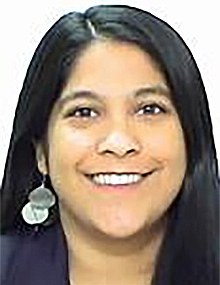This is the fifth in a series of interviews with grantees of the World Bank Group’s Umbrella Facility for Gender Equality (UFGE).

The Umbrella Facility for Gender Equality (UFGE) supports Regional Gender Innovation Labs (GIL). These generate evidence on what works to reduce inequalities between women and men and use this to shape policy. GILs evaluate scalable solutions and promote learning across countries and regions. For instance, together with the Adolescent Girls Initiative (AGI) (2008 to 2015), the Africa GIL has generated some of the strongest evidence to date about the impact of employment programs on adolescent girls and young women.
What do we know works to help adolescent girls and young women enter into productive employment?
First, we found that gender-blind youth employment programming means that you are only going to get men. If you want women and girls to participate, you need to build their interest and their families’ interest, either by specialized outreach or by designing the program just for women.
Second, it is not enough to have young women to participate. You also need specific measures such as childcare, flexible schedules, safe and accessible locations, and transportation to these to accommodate their participation in a program. For instance, in Liberia, the AGI pilot the Economic Empowerment of Adolescent Girls and Young Women (EPAG) let girls choose between morning and afternoon employment related training sessions, and timing of classes allowed them to travel home during daylight. In a GIL-tested BRAC program in Uganda, community safe-space trainings were held after school in girls’ own neighborhoods to make them easily accessible and safe for girls.
Third, soft skills matter for girls. We are providing soft skills training, including negotiation and communication, stress and emotional management, personal safety and reproductive and sexual health, and financial literacy, to girls with the aim to identify what skills make the most difference to them. These soft skills not only help girls to secure a job, but also enable them to develop a stronger sense of agency in their own lives. For example, negotiation skills prepare girls to communicate not only with future employers, but also with parents and partners about employment and income generation.
Fourth, focus on younger girls. Many youth employment projects target 15 to 24 year-old girls but end up attracting women of 20 and older. This is often too late as many of these women already have children, which places additional constraints on their employment opportunities. You thus have to engage girls at a much younger age, and this colors the kind of advice and guidance we give to projects.
Finally, we found that these projects can be cost-effective. For instance, at a cost of under US$100 per girl per year, the BRAC program raised the likelihood that girls were engaging in income-generating activities by 72 percent and raised their monthly consumption expenditures by 38 percent.
Do projects use this evidence to improve their impact on adolescent girls and young women?
These lessons and the GIL-tested models have been widely disseminated and used in the design of projects focused on adolescent girls and young women. Furthermore, the next generation of IDA-financed programs, not just in Africa but in other regions as well, are taking up these lessons. For example:
- To reduce high fertility in Sahel, where early marriage is common, you have to reach girls at a young age. The Sahel Women's Empowerment and Demographic Dividend (SWEDD) Project is a 170 million reproductive health project operating in six Sahel countries (Burkina Faso, Chad, Cote d'Ivoire, Mali, Mauritania, and Niger), including a 65 million component focused on adolescent girls aged 10 to 19. The SWEDD project offers community safe spaces and vocational training, and includes conditional cash transfers to encourage girls to stay in school.
- For Tejaswini, the team used global evidence to make the case that girls need a foundation of life skills before making any choices between continuing education and entering the job market. This project is similar to the BRAC Uganda model in that it uses a platform of community-level safe spaces to build girls’ life skills. Similar to the EPAG-model, the program also allows girls to apply and qualify for different types of education and vocational training opportunities based on their interests and qualifications. Through Tejaswini, we will learn operational lessons on how to take a model mainly implemented by international NGOs in Africa to scale as part of a large government-run program with multiple local NGOs as implementers in the state of Jharkhand in India.
What do you expect we will learn as this evidence is scaled up?
Through this new generation of programs, we are learning what works in different contexts. The SWEDD program, for example, is adapting the community safe-space model to new locations by piloting afterschool programs in school premises for girls, and testing parallel boys’ clubs to shift gender norms. Second, we are learning what type of impacts these programs will have beyond labor-market outcomes. For example, both Tejaswini and SWEDD will measure the rate at which students remain in and return to school, and through SWEDD we will know what impact these programs will have on delaying marriage and fertility outcomes.
Are you interested in learning more? Here are some useful resources:

